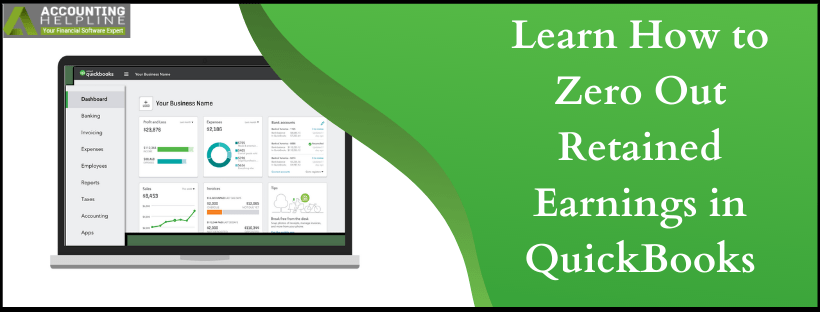Last Updated on March 11, 2025
In accountancy, the transfer of the balances a company accumulates in a fiscal year to an account is deemed highly significant. Not only this transaction helps out the company to get an understanding of their business’s profit or loss figures, but it also helps them to begin the coming fiscal year without any inconsistencies. Usually, it requires the help of an accounting professional to look over the whole process to avoid any mistakes. However, you can zero out retained earnings in quickbooks without the help of one as it is done automatically by the software at the end date of the fiscal year set by the company. Read till the end to figure out the steps and prior warnings.
The transfer of the year-end’s amount to the account of the company’s choice is necessary and efficient. However, you could face certain quickbooks retained earnings problems while carrying out the transaction. To get external help from a expert, call on the Accountng Helpline’s toll-free number 1.855.738.2784 anytime
How to Delete Retained Earnings in quickbooks?
The retained earnings of a company are referred to as the fiscal year’s ending balance, irrespective of the positive or negative connotations along with it. It shows the final amount after all the invoices are done and all the bills are paid. If the expenses and earnings of a company are $15000 and $17000 respectively, the final number will show a negative balance of $2000. However, if the earnings are more than the expenses, there will be a surplus that has to be transferred before the start of the next fiscal year. As we mentioned earlier, quickbooks automatically transfers the retained earnings of the user to an account assigned by the business. Hence, there is no need to get rid of the retained earnings in quickbooks as it is done by the software itself. However, it is important to choose a closing date for the financial year of your business so the software can close the retained earnings account in quickbooks. Follow the given steps to be done with it right away.
- Open quickbooks and go to the Edit menu.
- Select Preferences and then choose Accounting option.
- Click on the Company Preferences tab and click on the Set Date/Password button.
- In the coming window, select a Closing Date from the calendar.
- Enter the Closing Date password and then confirm it in the next box.
- Click on OK to close the window and then select Save & Close.
What to do if the quickbooks Retained Earnings are Incorrect?
It is always good to correct the errors committed in your fiscal statements in the previous years. Since you can’t affect the corrections in those particular financial reports, as you have already sent them out. However, you can post the earlier period adjustments in the running period’s retained earnings account to correct the discrepancy. Let’s take an example that you unknowingly overstated your annual sales two years ago. So, in order to fix it, debit the overstated amount to the opening balance of the current period’s retained earnings account and credit it in the revenue account. This entry decreases revenue and retained earnings to reflect the correct financial position of the business.
How do I adjust retained earnings in quickbooks?
If there are any irregularities between the retained earnings and current fiscal year’s statement of your business, you can clear them out by checking through the transactions in the journal reports or the general ledger. We might like to add that it is better to have your accountant to assist you with it and correct any mistake with a transaction that is causing the errors.
Here, we would like to end our blog on the queries related to how to zero out retained earnings in quickbooks. We hope that the information jotted here from the trusted and expert sources will help you to solve all the problems you are facing while completing the deed. However, if you require any additional support whatsoever, dial 1.855.738.2784 and get on the line assistance anytime.

Edward Martin is a Technical Content Writer for our leading Accounting firm. He has over 10 years of experience in QuickBooks and Xero. He has also worked with Sage, FreshBooks, and many other software platforms. Edward’s passion for clarity, accuracy, and innovation is evident in his writing. He is well versed in how to simplify complex technical concepts and turn them into easy-to-understand content for our readers.
